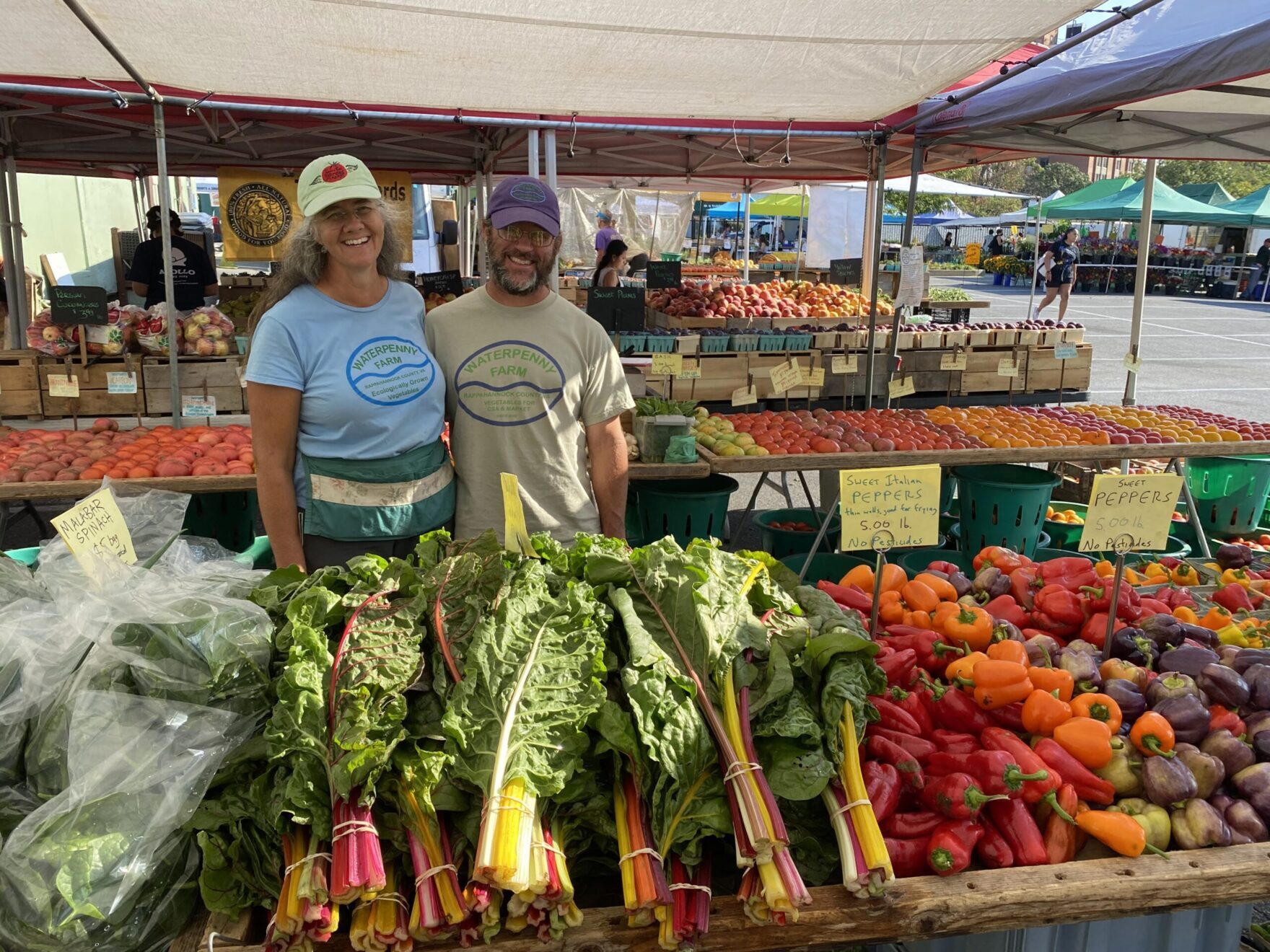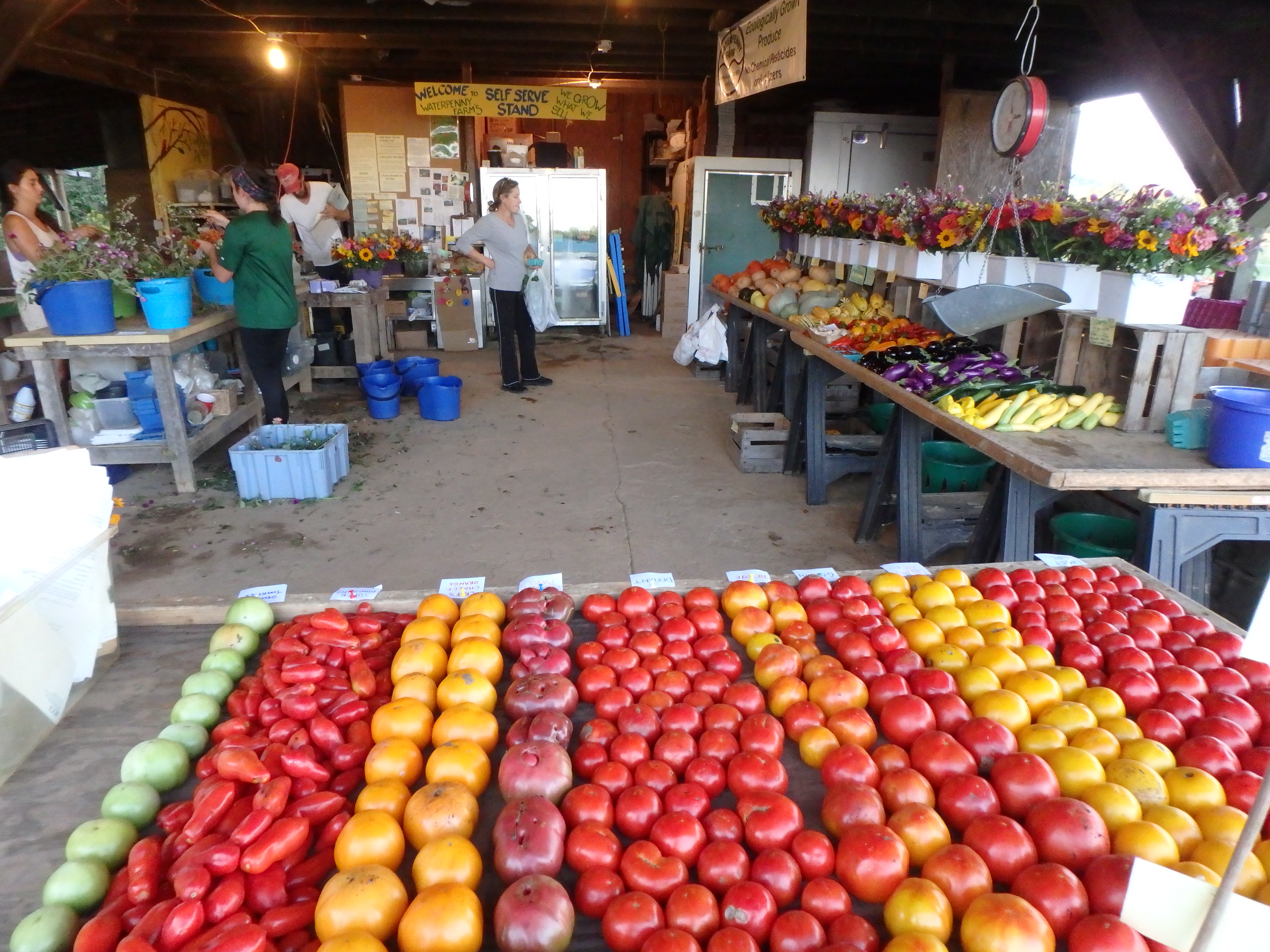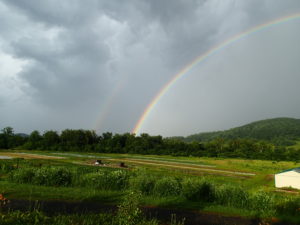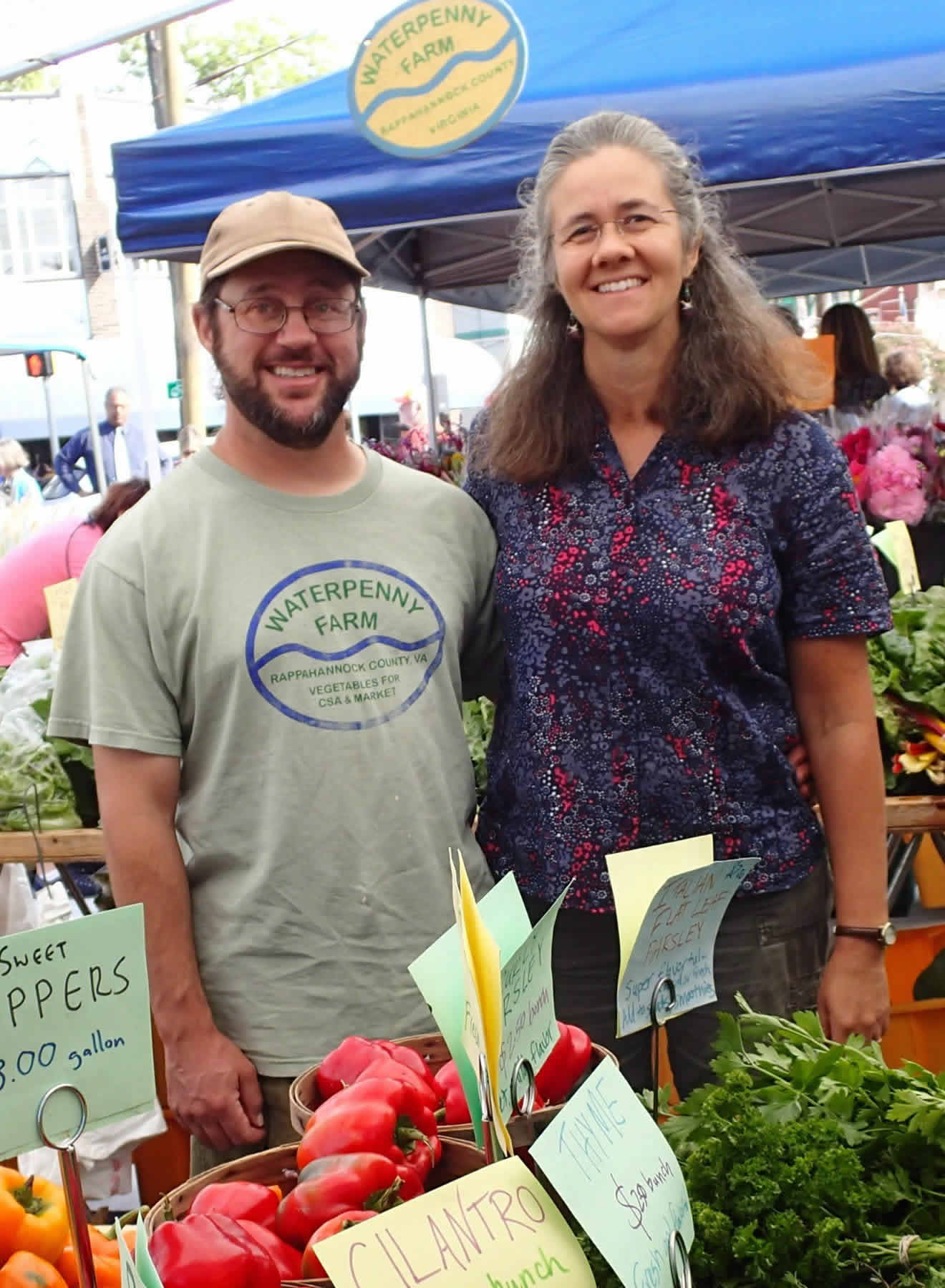We have been making our living farming in Sperryville since 2000; 2024 marks our 25th year farming here! Our farm uses ecological methods, building our soil for decades using only organic inputs and no pesticides. We only sell our own produce, directly from our farm to you.
Walk-up can stop by the farm to shop– we have a self serve stand in our green barn. We accept VENMO, cash, or checks. We are now at our weekly Farmer’s Markets in Arlington and Takoma Park, selling our fresh, pesticide-free produce in a rainbow of varieties. Meet us at markets!
We have and abundant harvest for sale in the barn and at market! This includes lots of tomatoes, eggplant, zucchini and summer squashes, garlic, fresh herbs, potatoes, chard and summer spinaches, flowers, and more!
W e sell at two wonderful DC area Farmer’s Markets on the weekends, April-November!
e sell at two wonderful DC area Farmer’s Markets on the weekends, April-November!
Arlington Courthouse on Saturdays, 8-12 (on the corner of 14th and Uhle), Starting April 21
Takoma Park, MD on Sundays 9-1 (in the corner of the Market behind Takoma Bevco).
We grow everything we sell at market and on the farm. Ecologically grown, and pesticide free.

A typical summertime spread of our freshly harvested produce for sale in our open-air green barn, 1/4 mile up Waterpenny Lane.
To shop in season for our freshly harvested produce on the farm, come up Waterpenny Lane to the green barn. Pull into the covered area, and find produce laid out on tables and in the cooler items for sale. The glass cooler is stocked with greens and more perishable items, and others will be on tables in the barn; prices are posted. We harvest for market and local customers and make fresh, seasonal flower bunches on Fridays. The change box and a locked box for payment are secured to the counter. We take cash, checks, or VENMO for payment. We operate on an honor system. All are welcome; you don’t need to be a CSA shareholder to shop.
Follow us on Instagram and Facebook for our latest photos!
______________________________________________
Waterpenny Farm CSA (Community Supported Agriculture)
In 2024 we will offer 19 weeks of vegetables picked up Thursday afternoons from June 6 through October 10. On-farm shareholders sign in and pick up their produce from a market-style setup in our barn. Our CSA is full for the season, but non-shareholders are welcome to come shop at our self serve stand in the Barn. Come Friday-Saturday for the most variety, but we are open every day. It runs on a honor system. We accept VENMO, cash, or checks.
We are proud that our CSA provides vegetables to our low income neighbors through a share program in partnership with the Rappahannock Food Pantry!
Or wonderful shareholders and customers are donors to the program, which directly funds reduced price farm shares for our community in need. In addition to 10 donated shares, we regularly donate our extras to the Pantry.
______________________________________________
Farming works in Rappahannock County!
We have found success by growing using ecological methods to produce the best quality, most nutritious produce possible, and dircct marketing to customers at DC area Farmer’s Markets and on the farm. Read an informative article from the Rappahannock News about our farm’s history here. It was written in September 2020 by local writer Daphne Hutchinson marking our 20th year making our living farming in Sperryville.
___________________________________________
Homegrown videos:
Here is a video Farm Tour in Dominoes our sons made, with Eric playing the banjo!
Here is another video of a song commemorating our 20 year anniversary, telling the story of our farm. “Twenty Years, Still Here”
___________________________________________
Watepenny Soils Film Feature
December, 2016
Here is a link to the short film “Starting with the Soil at Waterpenny Farm” It features Rachel talking about our approach to farming and caring for the soil. It also tells some of our farm’s history and our business philosophy. It was made made at Waterpenny Farm in June 2016 by Elinor Goodrich and Aaron Port, through the Natural Resources Conservation Service (NRCS) and the Virginia Cooperative Extension
___________________________________________
We’ve gone Solar!
April 24, 2013
In Spring 2012, we had a bank of 24 solar panels installed on our pole barn. 12 of these panels produce enough electricity for all or our farm use, so now our coolers, greenhouse and barn lighting are all solar powered! This portion was partially funded through a USDA grant. The other half are a personal investment, and produce roughly 1/3 of our home use electricity. We’re excited about this new step in sustainability. In just a year, we’ve saved over 12 tons of Carbon Dioxide from going into our environment, and saved money on our power bills as well. The investment should pay for itself in 10 years.

